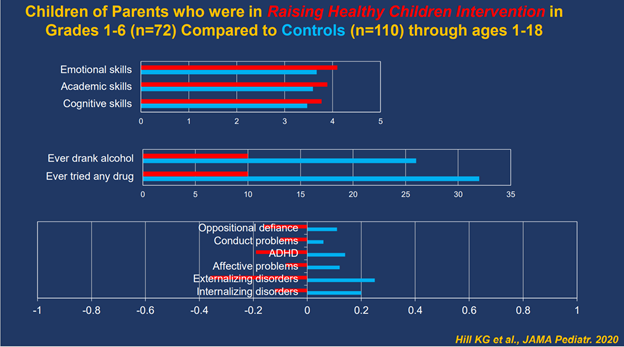
Top 5 Take-Aways from the Annual HIDTA Prevention Summit
On October 8, the Office of National Drug Control Policy’s (ONDCP) National High Intensity Drug Trafficking Area (HIDTA) Program Office (NHPO) and A Division for Advancing Prevention and Treatment (ADAPT) sponsored the Annual Prevention Summit, titled Advancing Substance Use Prevention in HIDTA Communities: Standards, Strategies, and Support. This summit gave Yellowstone County’s coalition, Substance Abuse Connect, the opportunity to learn about resources, best practices, and the successes of communities who receive funding from High Intensity Drug Trafficking Area Task Forces.
The following are my top 5 take-aways from the resources and information shared:
- We are all familiar with the proverb, “an ounce of prevention is worth a pound of cure.” However, it can be more compelling to share quantified program costs versus actual savings to demonstrate the effectiveness of a specific program. Washington State Institute for Public Policy (WSIPP) calculates and catalogs the benefit-cost estimates for evidence-based programs to identify policy options that have been tested and found to achieve the greatest improvements in outcomes. The catalog can be found here: https://www.wsipp.wa.gov/BenefitCost
- Dr. Robin Jenkins from the National Prevention Science Coalition to Improve Lives, reminded us that “Sustainability is best designed from the outset.” When thinking about cross-system collaboration, it is important to build sustainability in, rather than attempting to incorporate it after implementation. Additionally, we often are working to address wicked problems in open systems and therefore implementation needs to account for context and the linkages between existing structures and systems.
- It can sometimes be frustrating to work in a field that impacts long-term rather than immediate results. Recently, a 2020 study by Hill K.G., et al. published in JAMA Pediatrics examined the possible intervention outcomes on the offspring of individuals (now parents) who participated in the Raising Healthy Children preventative intervention in elementary school, and found that the benefits of prevention can be realized beyond the original participants, in the next generation as well. They found significantly improved early child developmental functioning, lower teacher-rated behavioral problems, higher teacher-rated academic skills and performance, and lower child-reported risk behavior in the children of these former participants (see charts below). These findings demonstrate the importance of childhood prevention programs not only for later adult functioning, but also for subsequent generations, meaning our impact extends further than we may realize.
- The panel of speakers who presented the session “Moving towards EXTRAORDINARY: A Workshop Focusing on Implementation, Evaluation, and Value Analysis Fundamentals for Substance Use Prevention” was comprised of representatives from the National Prevention Science Coalition to Improve Lives and the Impact Center at Frank Porter Graham Child Development Institute. There is a wealth of information, resources and knowledge available at the websites of these organizations: https://www.npscoalition.org/ and https://impact.fpg.unc.edu/
- I always like to learn of other communities’ successes to see what lessons can be learned and brought forward to my community. The Martinsburg Initiative is a great example of an innovative partnership between the Martinsburg Police Department, Berkeley County Schools, and other community groups to address the opioid epidemic, specifically heroin, in the State of West Virginia. Their efforts apply the recognized science of Dr. Vincent Felitti’s Kaiser Permanente Adverse Childhood Experiences (ACE) Study through a neighborhood school-based strategy to target at-risk children and troubled families. You can read more about The Martinsburg Initiative here: http://www.martinsburgpd.org/martinsburg-initiative/
